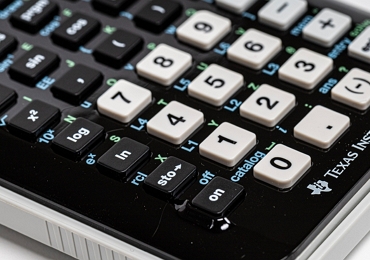How to Write Effective Meeting Minutes (with Examples)

Regardless of whether you've been entrusted with taking notes for a panel or you've been named the head to the board of your company or organization, planning meeting minutes don't always need to be a burdensome task even if you are new to it. Here are a few tips and ideas that will assist you in the beginning with writing and planning successful meeting minutes, just as meeting minutes’ test and layout that you can follow.
Regardless of whether you've been entrusted with taking notes for a panel or you've been named the head to the board of your company or organization, planning meeting minutes don't always need to be a burdensome task even if you are new to it. Here are a few tips and ideas that will assist you in the beginning with writing and planning successful meeting minutes, just as meeting minutes’ test and layout that you can follow.
Meeting minutes are considered as an official record of the meeting that is mostly for its members and a merge of the data for the colleagues who couldn't join the meeting firsthand. Meeting minutes are intended to be a lasting put-down account, especially for the future references for the decisions and choices made during the meeting time. It's regularly helpful as a back-up record for future employees, board members, or projects.
But It is essentially important to note down the essence of the things done in the meeting, including decisions, or even delicacies, for example,
- Choices made in the meeting. For example, the votes or any decision made.
- The following stages arranged
- To distinguish the proof and the following things to do.
Meeting Minutes are an unmistakable record of the meeting for its employees, members, and a wellspring of data for individuals who couldn't join in. Now and again, meeting minutes can go about as a source of perspective point, for instance:
- At the point when a meeting's results sway other communitarian exercises or tasks inside the organization.
- Minutes can serve to advise (or remind) people of errands relegated to them or potentially courses of events in the meeting for future reference.
There are basically five stages engaged with meeting minutes:
1. Pre-Planning
2. Record taking - at the meeting
3. Minutes writing or interpreting
4. Conveying or sharing of meeting minutes
5. Recording or capacity of minutes for future reference
1. Pre-Planning meeting minutes:
A very much arranged meeting guarantees successful meeting minutes. On the off chance that the Chair and the Secretary or minutes-taker cooperate to guarantee the plan and meeting are all around considered, it makes minute taking a lot simpler. For instance, contingent upon the meeting structure and the devices you use, the minutes-taker could work with the Chair to make a record group that fills in as a plan and minutes layout too.
What is the plan for a meeting?
Meeting plan = layout:
In any event, it's critical to get a duplicate of the meeting plan and use it as a guide or diagram for taking notes and setting up the minutes – with the request and numbering of things on the minutes of meeting coordinating those of the plan.
What's more, the plan or potentially meeting notice additionally gives data that should be remembered for the minutes, for example,
The names of all the meeting participants, including visitors or speakers
The records that are conveyed with the plan or gave out in the meeting – duplicates (computerized or printed copy) of presents ought to be put away with the meeting minutes for future reference and for imparting to the individuals who couldn't go to the meeting (and others as dictated by the meeting's Chair).
Explaining Expectations:
At the point when you take on another job as minutes-taker or secretary, make certain to solicit the chair from the panel or board what their desires are of your job during the meeting, just as the kind of detail he/she expects in the minutes.
2. What needs to be remembered and added in the meeting minutes?
Before you begin taking notes, it's important to comprehend the sort of data you have to record at the meeting. As noted before, your organization may have required content and a particular arrangement that you'll have to follow, however, for the most part, meeting minutes, for the most part, incorporate the accompanying:
1. Date and season of the meeting
2. Names of the meeting members and those unfit to join in (e.g., "laments")
3. Acknowledgment or remedies/corrections to past meeting minutes
4. Choices made about every plan thing, for instance:
5. Activities took or consented to be taken
6. Subsequent stages
7. Casting vote results – e.g., (if vital, insights about who made movements; who supported and affirmed or using the display of support, and so forth.)
8. Movements have taken or dismissed
9. Things to be held over
10. New business
11. Next meeting date and time
Tips that may help your note-taking for Meeting Minutes:
1: Make a plan or outline– having a framework and an outline in that just write down notes, choices, or anything that is important. If you are taking notes by hand, consider adding a space underneath everything you write for your layout for your copied notes, at that point print these out and utilize this to catch minutes.
2: Registration participants2: Registration participants as they go into the room - on the off chance that you know the meeting participants, you can verify them as they show up, if not have people present themselves toward the beginning of the meeting or course a participation list they can registration themselves.
3: Record choices or notes on things to do in your blueprint when they happen to be certain they are recorded precisely
4: Request explanation if fundamental – for instance, if the gathering proceeds onward without settling on a choice or an undeniable end, request explanation of the choice, as well as the following stages, included.
5: Try not to attempt to catch everything – you can't keep up on the off chance that you attempt to record the discussion verbatim, so make certain to just (and plainly) compose (or type) only the choices, tasks, activity steps, and so on.
6: Record it –, if you are worried about having the option to stay aware of note-taking, think about account the meeting (e.g., on your advanced cell, iPad, recording gadget, and so on.) however make certain to tell members they are being recorded. While you would prefer not to utilize the chronicle to make an in the same words record of the meeting, the account can prove to be useful on the off chance that you need explanation.





